The Sensory Afferent Division Of The Peripheral Nervous System
The sensory afferent division of the peripheral nervous system. The sensory or afferent division of the peripheral nervous system provides the central nervous system brain and spinal cord with sensory information about the somatic senses tactile thermal pain and proprioceptive sensations and special senses smell taste vision hearing and equilibrium. Finally the efferent or motor division is again subdivided into the somatic nervous. The Two Subdivisions Of The Efferent Division Of The Peripheral Nervous System Are A.
Receptors - an end organ or a group of end organs of sensory or afferent neurons specialized to be sensitive to stimulating agents as touch or heat. Based on the direction in which they conduct action potentials neurons split the PNS into sensory afferent and efferent divisions. Peripheral nervous system PNS Nerve outside the brain and spinal cord.
The Nervous System Functions of the Nervous System Sensory input gathering information To monitor changes occurring inside and outside the body Changes stimuli Integration To process and interpret sensory input and decide if action is needed Motor output A response to integrated stimuli The response activates muscles or glands Structural Classification of the Nervous System Central. The afferent or sensory division transmits impulses from peripheral organs to the CNS. The peripheral nervous system is further subdivided into the somatic nervous system and the autonomic nervous system.
Briefly compare the afferent and efferent divisions of the peripheral nervous system PNS Sensory information detected by receptors is transmitted by the afferent division of the PNS to the CNS. The afferent arm consists of sensory or afferent neurones running from receptors to the CNS. The efferent division sends information from the nervous system to the organs of the body which then carry out the appropriate response.
The afferent division consists of neurons that are bringing sensory information about the periphery toward the CNS while the efferent division consists of neurons that are conveying information away from the CNS and out to control muscles and organs in the body. Away from the CNS to the effectors 2. Each system contains 2 components.
Spinal cordThese cells do not have dendrites that are typically inherent in neurons. The sensory division collects information touch pain pressure vision taste etc from outside somatic sensory and inside visceral sensory of the body and carries them to. The ANS is responsible for providing sensory and motor innervation to smooth muscles blood vessels glands and internal organs.
The afferent division of the PNS can be understood by looking at how various special senses function individually for example the sense of hearing or the sense of vision. Similarly what are two subdivisions of the efferent nerves.
They have a smooth and rounded cell body located in the ganglia of the peripheral nervous system.
Nerve fibers that carry information to the central nervous system. Each system contains 2 components. The efferent division sends information from the nervous system to the organs of the body which then carry out the appropriate response. Peripheral nervous system PNS Nerve outside the brain and spinal cord. The peripheral nervous system is further subdivided into an afferent sensory division and an efferent division. Send signals to the brain from the periphery. The sensory afferent division of the peripheral nervous system select one. The Two Subdivisions Of The Efferent Division Of The Peripheral Nervous System Are A. Receptors - an end organ or a group of end organs of sensory or afferent neurons specialized to be sensitive to stimulating agents as touch or heat.
The peripheral nervous system is further subdivided into the somatic nervous system and the autonomic nervous system. The Nervous System Functions of the Nervous System Sensory input gathering information To monitor changes occurring inside and outside the body Changes stimuli Integration To process and interpret sensory input and decide if action is needed Motor output A response to integrated stimuli The response activates muscles or glands Structural Classification of the Nervous System Central. The peripheral nervous system is further subdivided into an afferent sensory division and an efferent division. The ANS is responsible for providing sensory and motor innervation to smooth muscles blood vessels glands and internal organs. Sensory nerves contain only afferent fibers long dendrites of sensory neurons. Last but not least we have reached the autonomic division of the peripheral nervous system ANS. The peripheral nervous system is itself classified into two systems.
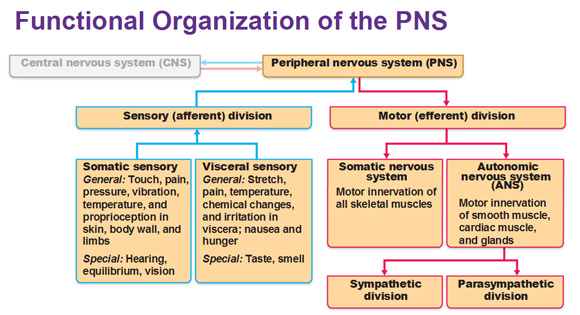


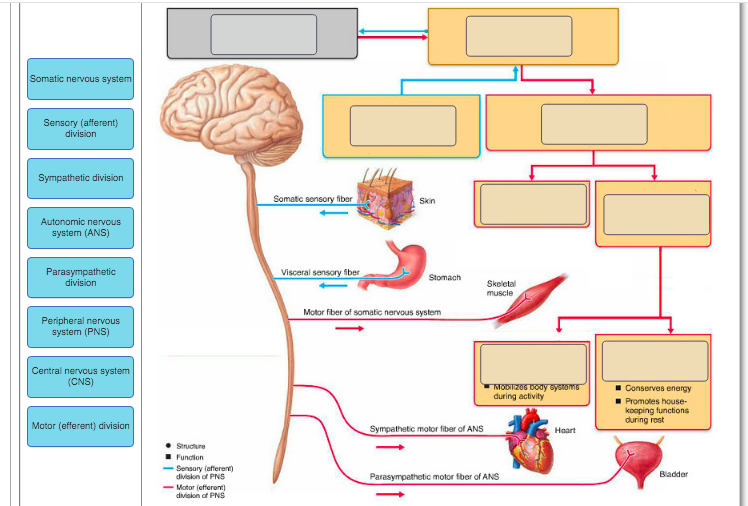







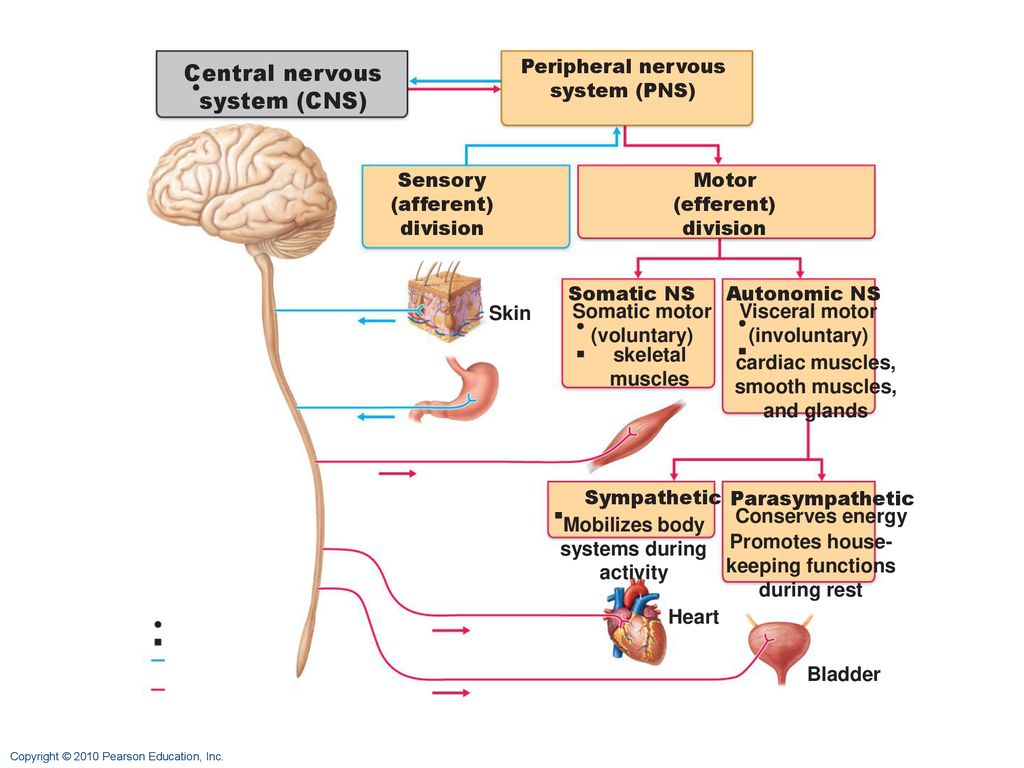

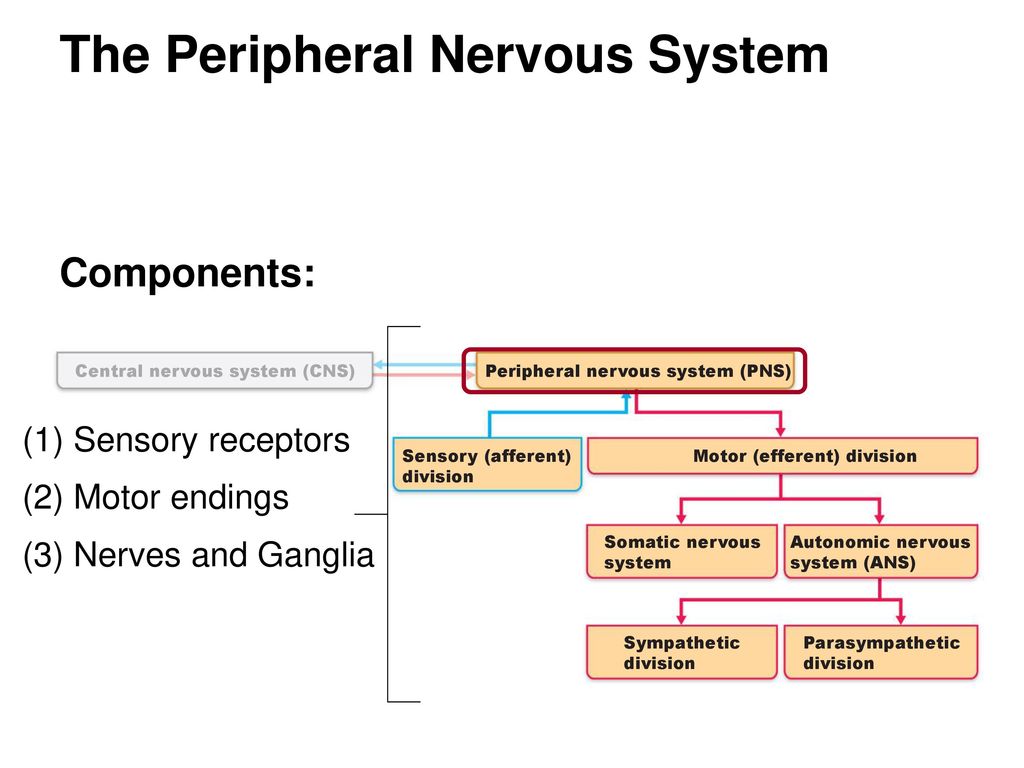


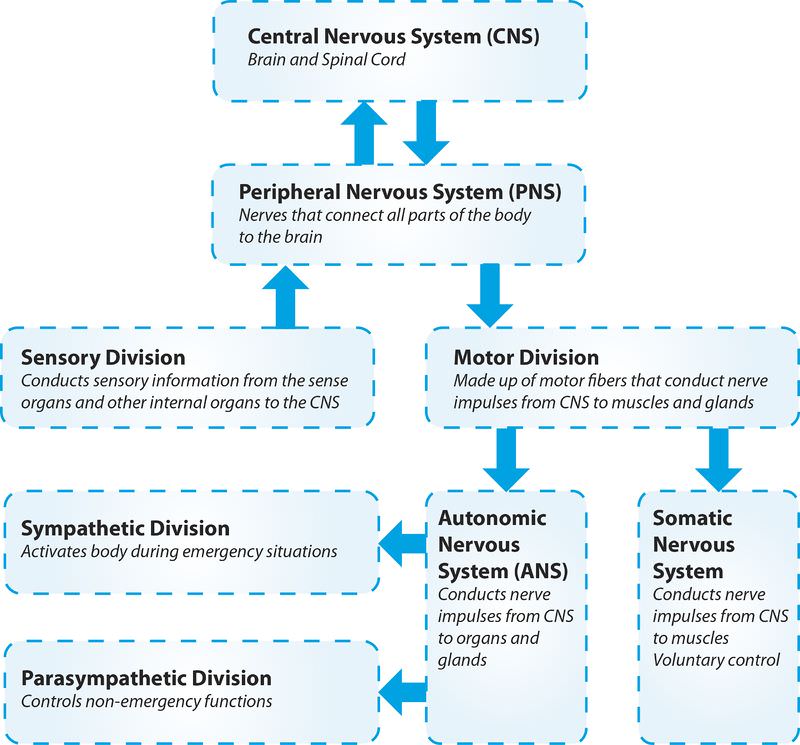



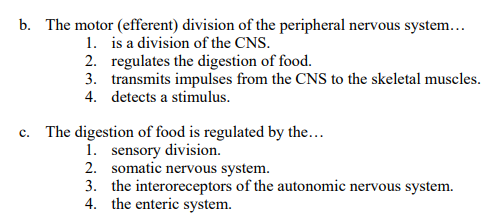

/what-is-the-peripheral-nervous-system-2795465-FINAL-b69e1bb803654212a83d9e68eb4847d0.png)









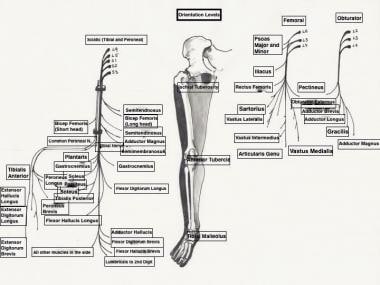

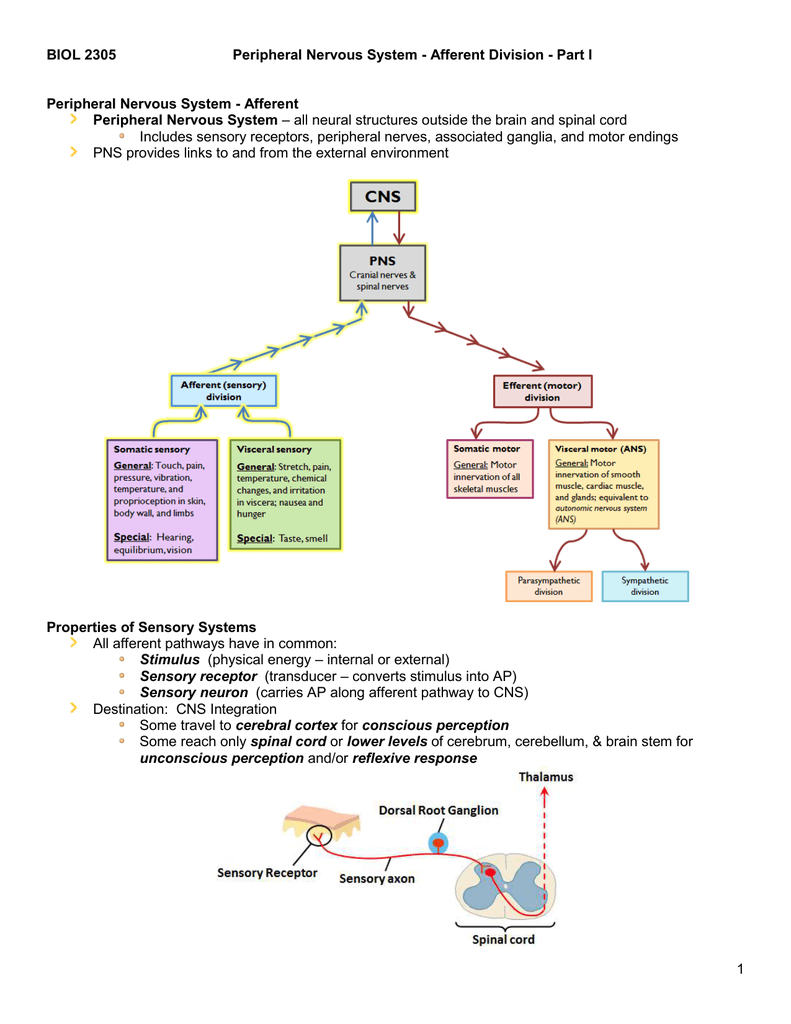
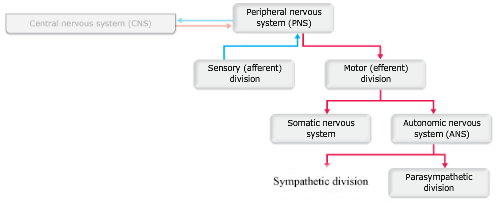

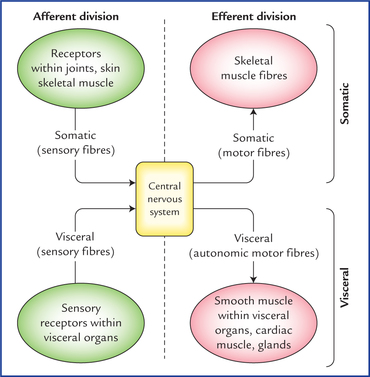
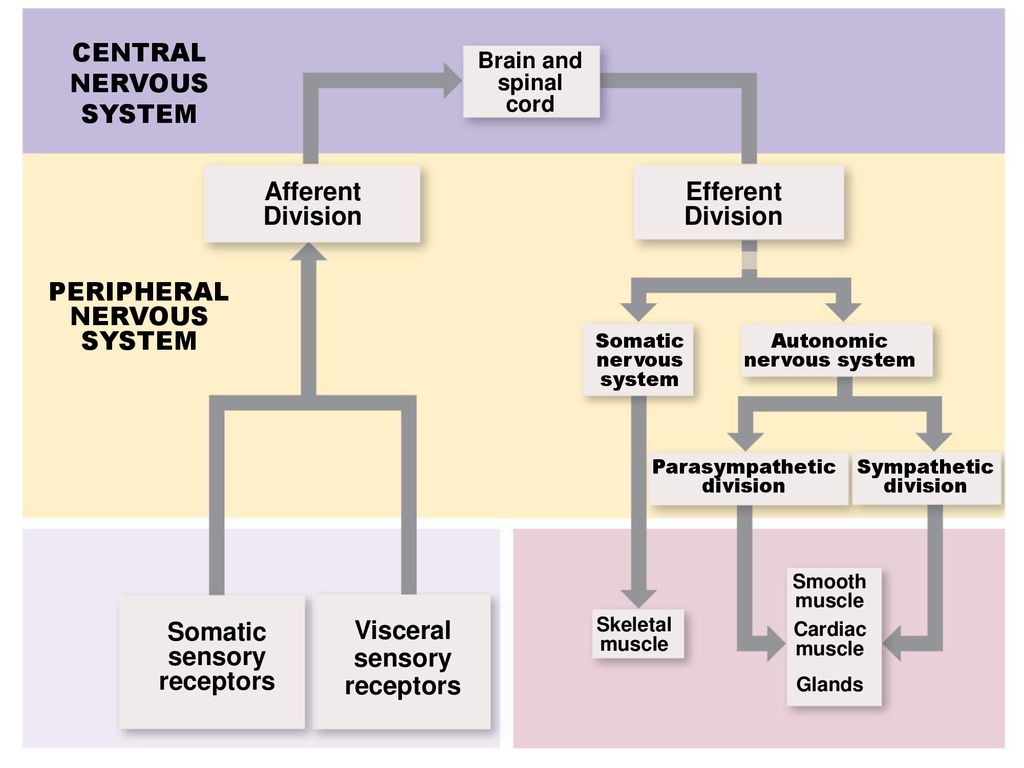
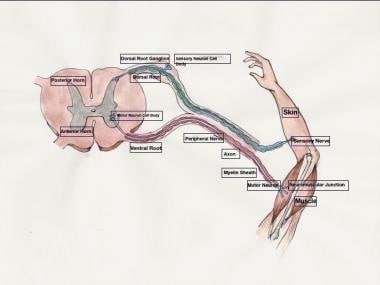

Post a Comment for "The Sensory Afferent Division Of The Peripheral Nervous System"